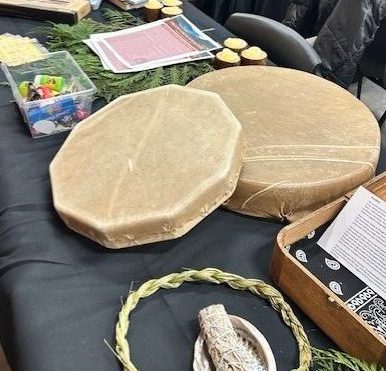To learn more about Emergency Support Services (ESS) for Nations, which includes 15 mainland Coast Salish Nations dedicated to strengthening the capacity of Indigenous communities in emergency response, we spoke with co-founders Christina Kelly, Emergency Program Manager at Leq’a:mel First Nation, and Jenna Noppen, Disaster Recovery Manager at Sumas First Nation.
Christina and Jenna were also recently recognized with an Emergency Management Exemplary Service Award.
What is ESS?
ESS is a provincial program that provides temporary support for essentials such as accommodation, food, clothing and other assistance to people impacted by disasters. ESS for Nations was developed to ensure Indigenous led, culturally appropriate support is available to mainland Coast Salish Nations during disasters.
Inspiration behind ESS For Nations
“The inspiration behind ESS For Nations came from a clear need to provide culturally safe and community-driven emergency support services,” said Christina and Jenna. “Many Indigenous communities have experienced barriers during emergency response efforts, often due to a lack of cultural understanding and appropriate resources.”
“By creating ESS For Nations, we aimed to bridge this gap and offer a model that is not only effective in emergency situations but also rooted in Indigenous traditions, values and knowledge.”

Cultural safety and humility at the heart of ESS For Nations
Each First Nation in the mainland Coast Salish region is unique, with its own traditions, languages and ways of being. ESS For Nations is dedicated to ensuring that these distinct cultures are honored in emergency response.
“Our approach emphasizes the importance of spending time in each other’s communities, learning, training and building genuine relationships before an emergency happens,” said Christina and Jenna.
“Many of our communities are also connected through kinship ties, creating natural networks of support and understanding,” they shared. “By nurturing these connections, ESS For Nations fosters a sense of unity and collective strength that becomes invaluable during a crisis.”
In practice, this means integrating traditional practices, such as smudging, prayer and cultural protocols, into emergency response efforts and creating culturally safe spaces for community members during evacuations.
The ESS For Nations team is trained in trauma-informed care and lateral kindness, ensuring that every interaction is approached with empathy and respect.
Collaboration as a key to success
While ESS For Nations is built on Nation-to-Nation support, connecting with ESS teams across the province has been invaluable.
“These connections allow us to share knowledge, learn best practices and enhance our ability to support Indigenous communities,” said Christina and Jenna.
“It has been a wonderful experience, showcasing the power of working together to build resilient communities while maintaining a focus on Indigenous-led support and culturally safe practices.”


Looking ahead
ESS For Nations envisions creating an all-Indigenous evacuation centre: a safe and welcoming space where community members can seek refuge during emergencies.
“This centre would not only serve as an evacuation site but also as a training hub where Indigenous ESS teams can train together to build a unified approach to preparedness and response,” said Christina and Jenna.
They also advocate for greater Indigenous representation at all levels and building a strong network of trained volunteers. “We believe that greater support for our communities comes from within and should be reflected at all levels of government and through all phases of emergency management,” said Christina and Jenna.
Advice for other communities
Christina and Jenna encourage other communities considering a similar initiative to prioritize relationship-building within their own Nations and with partners.
“Start by listening to your community members, Elders and Knowledge Keepers to ensure your emergency plans reflect their needs and values,” they advised.
“Don’t be afraid to reach out for support. There are many organizations and individuals willing to help. Most importantly, approach emergency management with cultural safety and humility to create environments where everyone feels safe and respected.”

